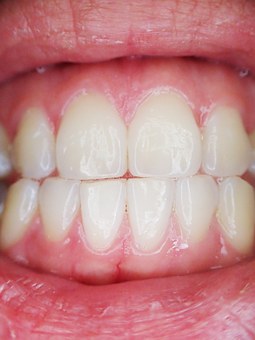Root canal therapy (RCT) is often surrounded by myths and misconceptions, but in reality, it’s a highly effective and common procedure for saving damaged or infected teeth. If your dentist has recommended a root canal, you may feel anxious or uncertain about the process, especially if you’ve never undergone the procedure before. This guide will walk you through each step of the root canal procedure to help you understand what to expect and how the treatment can restore your tooth and your oral health.
Step 1: The Consultation and Diagnosis
Before the procedure, your dentist or endodontist (a specialist in treating the pulp and nerves of teeth) will conduct a thorough examination of your tooth. This may involve X-rays to assess the extent of the damage or infection. If the tooth pulp is infected or inflamed, the root canal procedure is usually necessary to prevent further complications like abscess formation or tooth loss.
During the consultation, your dentist will explain why a root canal is necessary, address any concerns, and discuss the expected timeline. If you have questions or anxieties about the procedure, don’t hesitate to ask your dentist—they are there to ensure you feel comfortable and informed.
Step 2: Numbing the Area with Local Anesthesia
The next step in the process is ensuring your comfort throughout the procedure. Root canals have a reputation for being painful, but modern dental techniques and local anesthesia make the treatment much more comfortable than people often assume. The dentist will first administer a local anesthetic to numb the area surrounding the affected tooth.
You may feel a small pinch from the injection, but after a few minutes, the area will become completely numb. This ensures that you won’t feel any pain during the procedure. It’s also worth noting that you may feel some pressure or mild sensations during the treatment, but no sharp pain should be present.
For patients who experience significant anxiety about dental procedures, some practices also offer sedation options, such as nitrous oxide (laughing gas) or oral sedatives. These options can help you feel more relaxed and at ease throughout the procedure.
Step 3: Creating an Access Hole in the Tooth
Once the area is numb, the dentist will begin the root canal process by creating a small access hole in the crown (top) of the tooth. This allows the dentist to access the pulp chamber where the nerves, blood vessels, and tissues are located. At this stage, you may hear various dental instruments at work, but there is no need to worry—these tools are used to carefully and efficiently remove the infected tissue.
Step 4: Cleaning the Root Canal
After accessing the pulp, the dentist will begin cleaning out the infected or damaged tissue. This step is essential for ensuring that the infection does not spread and that the tooth is thoroughly disinfected. Using specialized tools, your dentist will remove the pulp from the chamber and the narrow canals within the roots of the tooth.
The dentist will also use an antiseptic solution to wash the area and prevent any further infection. In some cases, the dentist may leave the access hole open for a short period to allow any remaining infection to drain before proceeding with the next step. This is more common if the infection is severe.
Step 5: Shaping the Root Canals
Once the infected tissue is removed, the dentist will carefully shape the inside of the root canals to prepare them for filling. Shaping the canals ensures that the area is smooth and can be properly sealed. This is done with tiny, flexible instruments designed to clean and shape the canal walls.
During this process, your dentist may take additional X-rays to ensure the canals are properly shaped and cleaned. The goal is to remove any remaining debris while preserving the natural structure of the tooth.
Step 6: Filling the Root Canal
After cleaning and shaping the canals, the dentist will fill them with a special material called gutta-percha. This rubber-like substance seals the canals to prevent further infection and keeps the tooth stable. The dentist may also apply an antimicrobial agent to further protect the area.
Once the root canals are filled, the dentist will place a temporary filling in the access hole to protect the tooth while you wait for a permanent restoration.
Step 7: Sealing the Tooth and Placing a Crown
After the root canals are sealed and the tooth is protected with a temporary filling, the final step is to restore the tooth’s function and appearance. Since a tooth that has undergone a root canal is typically weakened, the dentist will often recommend a crown to cover and strengthen the tooth.
A crown is a tooth-shaped cap that fits over the tooth to restore its shape, size, and strength. In some cases, a filling may suffice, but a crown is usually preferred because it provides more long-term durability, especially for back teeth that experience a lot of pressure while chewing.
If your dentist decides to place a crown, you’ll typically need a follow-up appointment. During this visit, the dentist will take impressions of your tooth to create a custom-made crown. Once the permanent crown is ready, it will be placed on the tooth, completing the procedure.
Step 8: Recovery and Aftercare
After a root canal, most patients experience minimal discomfort, especially with the help of over-the-counter pain relievers. However, some soreness or sensitivity may occur, especially if the tooth was severely infected before the procedure. This discomfort usually subsides within a few days.
You can manage the discomfort with prescribed or over-the-counter pain medications, but it’s important to follow any aftercare instructions provided by your dentist. These may include avoiding chewing on the treated tooth for a day or two to give it time to heal and not eating anything too hard or sticky.
During recovery, keep the treated area clean by brushing and flossing gently around the tooth. If your dentist prescribed antibiotics, make sure to take the full course as directed to prevent any lingering infection.
Step 9: Follow-Up Visit
In most cases, a follow-up appointment is scheduled within a few weeks to check the tooth’s healing progress. The dentist will verify that the tooth is healing properly and that there is no lingering infection. If any issues arise, your dentist will address them promptly to ensure the best possible outcome.
Conclusion: Root Canal Therapy Is a Long-Term Solution
Although the idea of a root canal may seem intimidating, the procedure is highly effective at saving teeth that would otherwise need to be extracted. With modern techniques, local anesthesia, and sedation options, root canal therapy is now more comfortable and efficient than ever before. If you have been advised to undergo a root canal, rest assured that it can provide long-lasting relief, preserve your natural tooth, and prevent the need for more invasive dental procedures.
By understanding the step-by-step process, you can approach the procedure with confidence, knowing that it is designed to alleviate pain, restore your tooth, and protect your overall oral health for years to come.



